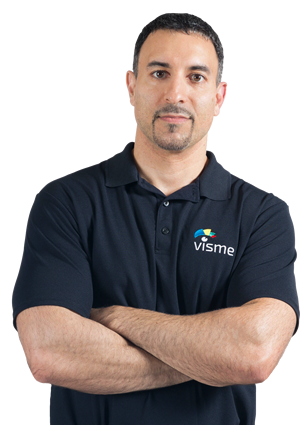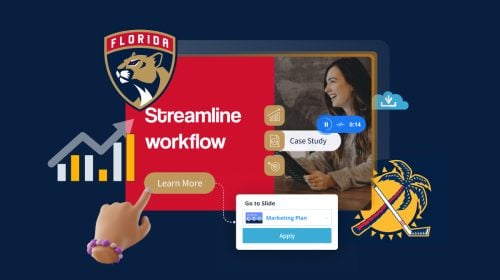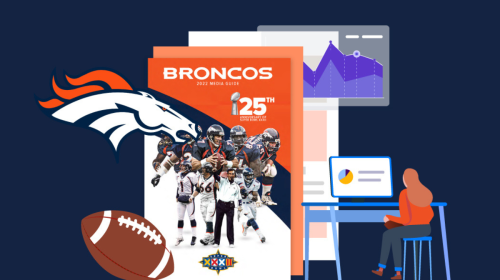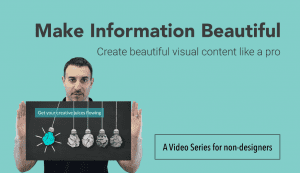I want to talk to you about a day in my life that was one to remember for all the right but also all the wrong reasons. You see, I used to drag race cars, and this one particular day, I had reached the finals for the very first time.
It was just me and one other person going head to head. We go up to the start line. That line flashes green. We’re down at the race track but unfortunately, he got a better jump than I did.
I’m slowly creeping up as we go towards that finish line but unfortunately again, that finish line crossed before I could take first place.
I finished in second place. It wasn’t first, but it was my best finish ever. I was elated. Little did I know, my day, in that moment, I was at the peak of my day headed for a valley.
What would happen later is something my family still talks about in a joking manner, nonetheless. Are you hooked? Well, any strong presentation will tell a story. It’ll keep your audience locked in from start to finish.
Hello World, my name is Mike Plogar here with Visme and if you stick around, not only will I tell you the seven types of presentation structures, I’ll also finish my story and give you something to laugh about.
Before we get to the seven types of presentation structures, it’s important to thoroughly plan your message in a rough draft.
First you gotta decide if you want your message to be informative, inspiring, persuasive or entertaining. It can be one or two of these, but don’t try to cover the entire map.
Then you want your title to be the very first slide in your presentation to set the tone for what you want to accomplish.
Start jotting your ideas down on paper and establish your main focal points. This will make writing your actual presentation much, much easier.
Fact and Story
If you’re looking to inform or inspire, the fact and story presentation structure is a great place to start.
Here, you intertwine facts into your stories to keep your audience interested. You start with “what is?” This is the present reality or the current situation at hand.
This statement should be completely factual and from there, you turn to what could be to express potential improvements.
By going from facts to stories, facts to stories, your audience constantly wants more. However, it is important to reach that finish line in your presentation.
Your viewers will feel like they’ve learned something new and they will be inspired to act. So make it easy for them to do so by drawing out exactly how they can create change.
This TED Talk by David McCandless on the beauty of data visualization is a perfect example of fact and story. He combined his own data with personal stories that the audience can relate to.
The Explanation
Our second presentation structure is the explanation. The explanation’s purpose is to inform about a process, create a plan to fix a problem or even to learn something new.
This is typically used by consultants or sales people trying to create new master plans.
You start at the bottom with the lay of the land. This shows where things are, but you want to establish a plan of attack to reach your destination.
You should start with a story to keep your audience excited.
Then step up to the road map. This is an actual visual representation on how you’ll reach your destination. The audience by now is on the right track.
Your first steps begin the adventure while your next steps are somewhere in the middle, laying out each step one by one by one.
When you’re almost there, you look back at just how far you’ve come. And finally, the arrival is when you’ve reached your destination, and the audience feels enlightened with new knowledge.
Try watching this TED Talk by Amy Cuddy. She explains how power poses affect the difficult situations and at the end, she even invites us all to try in a 2-minute practice of power posing.
The Pitch
Just as it sounds, the pitch is all about expressing an idea to solve a problem or to improve something.
Have you ever seen the show Shark Tank? It’s one of my favorites because you see small companies and individuals that are “pitching” their products to potential investors.
In the pitch there are a series of events to take place.
First is the wind-up. These are facts that you want your audience to relate to and to understand.
After that comes the hurdle. This is a problem or “the problem” that you have a solution for. Present this in a story so the emphasis is doubled.
After diagnosing the problem, shed some light on the idea and how the problem can be solved. This is called the vision.
Then comes the important part. Present solid options that would solve the issue. Use tests, experiments, research, data. Anything you possibly have as proof (and a story) to give backbone to your ideas.
And finally, you want to close out with your best option. Tell the audience the fine print on what the next steps to take are, and finish with the hook, the conclusion, with an added bonus to the solution.
Check out this pitch by Enric Sala. After ten years of research, he’s hoping to turn high seas into natural reserves solving oceanic destruction and low fish supply.
The Drama
Typically in our lives, we like to avoid drama in any way possible. But that doesn’t have to be the case in a presentation.
This style follows a main character or group of people through all the trials and tribulations they’re experiencing before finishing with an inspiring success story.
There are eight steps in this structure, and you start with one fine day.
This sets the scene of the story. There’s nothing great going on. Nothing bad. Everything is just fine.
Suddenly a challenge appears. This is a problem that must be solved. Then you attack it with a descending crisis but unfortunately, that just makes everything worse.
You’ve now reached rock bottom. Your story is at a standstill.
Here’s a little secret: pause for added effect.
When all seems lost, some lights shine through to get you right back on your feet and with this new discovery, you’re fighting to get back to where you started and the rise.
Before long, you’ve reached the return. This is where everything is normal again. But why stop there?
You’ve reached a conclusion, but you’ve also learned an invaluable lesson along the way. Your audience is inspired, they’re informed and they’re even entertained a little bit with a great comeback story.
This TED Talk by Adam Driver is a perfect example. This takes you through his journey of being a marine, becoming an actor and the lessons he learned along the way.
Situation-Complication-Resolution
One of the most popular presentation structures in the sales world is situation-complication-resolution.
It’s a very simple style, simply connected with the words “but” and “therefore.”
You start with a neutral statement like, “The team is playing well lately.” Then a complication happens, and that’s where the word “but” comes in. The team is playing well lately, but their best player just went down with a knee injury.
You want to make sure you use facts to back everything up in your statement. It’s also much easier to break down these facts when creating a resolution.
Finally, you’re coming close to your destination when you use the word “therefore.” The team is playing well lately, but their best player just went down with a knee injury. Therefore, someone else must step up and improve their play.
You want to make sure you’re always backing up your statements with facts and statistics.
Paul Greenberg did an excellent job of this in his TED Talk explaining how the world is overeating certain types of seafood, and what can be done to fix that.
Situation-Opportunity-Resolution
Our sixth presentation structure is nearly identical to our last model. This is situation-opportunity-resolution. Everything remains the same as our last one, but the movement now trends upwards.
The problem here is not too hard to fix. It’s even looked at as more of an opportunity than an issue. These presentations, though, are often the shortest, which is where the trick lies. The audience at the end might question, “Is that all?”
So make sure you throw in a story to make your presentation more relatable and more effective.
This TED Talk by Adam Galinzky incorporates personal stories and proof about the difficulty of speaking up at the right time.
Hook, Meat and Payoff
Our final presentation structure is the hook, meat and payoff. This is very similar to the drama as it relies very heavily on storytelling.
It all starts with the hook. This is where you’re laying the foundation to get your audience on the edge of their seats.
Then comes the meat. This is the most detailed section of your presentation, and it can typically consist of a list or a timeline to help your audience follow along.
Then you want to close with the payoff. This is an inspiring conclusion that should reference the beginning of your presentation, and it should leave your audience feeling inspired.
Think of the last time that you saw a really good movie. You likely left that movie theater or your couch feeling inspired and wanting to do good. That’s exactly what this presentation style is.
Jill Bolte Taylor, a neuroanatomist, suffered a brain hemorrhage. And she takes us through her eight-year journey of recovery, and she even uses a real brain to grab her audience’s attention. This is one of the best TED Talks that I’ve ever seen, and I encourage you to click here and watch for yourself.
Now you’re not done just yet. After you decide which type of presentation structure best fits you, it’s now time to create a storyboard.
Think of yourself as a filmmaker. A storyboard can lay out the aspects of your presentation in a visual draft of sorts.
To make it very easy to visualize, create your storyboard with index cards. Each card can represent a different slide in your presentation. And by putting it on paper first, it makes it much easier to edit, and it doesn’t get any easier than editing with Visme.
A very shameless plug, I know, but Visme is completely free. You can edit a blank canvas with videos and animations and audio. You can edit text and images that fit your style. There are endless possibilities with Visme.
Before we go, I do want to tell you to rehearse, rehearse, rehearse. TED speakers say you should rehearse a minimum of ten times before doing the real thing.
You want it to seem professional, and you want your presentation to flow naturally.
Now at the beginning of this video I told you all about my drag racing story, and how I was at the peak of my day and I was headed for that valley. Right?
Well that valley happened later on that evening when I decided to show off my skills on my stilts that I owned in front of my family and friends.
And well, what happens when you try to show off and your confidence is high? Well you’re brought back down to earth. Literally. I was brought back down to earth in a big fall and I broke both of my arms.
Yes, one of the most embarrassing stories in my life, and I have now just told the entire YouTube universe. Thank you for listening.
Hey, before we go, I do want to make sure that you do check out Visme’s website and subscribe to our channel for constantly updated content.
For now, I’m Mike Plogar with Visme helping you make information beautiful.


































































 11:22
11:22  Beginner
Beginner 










































